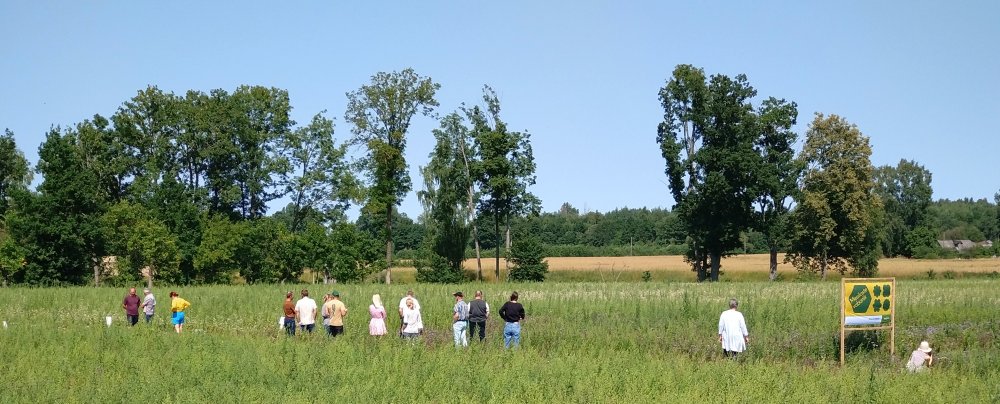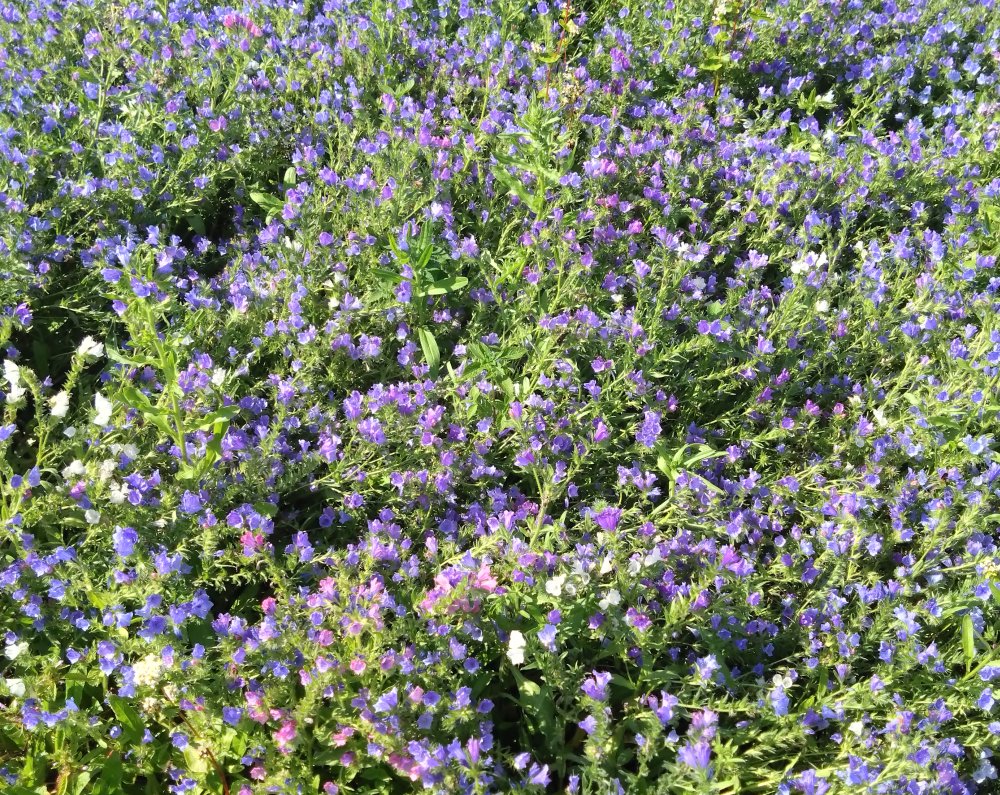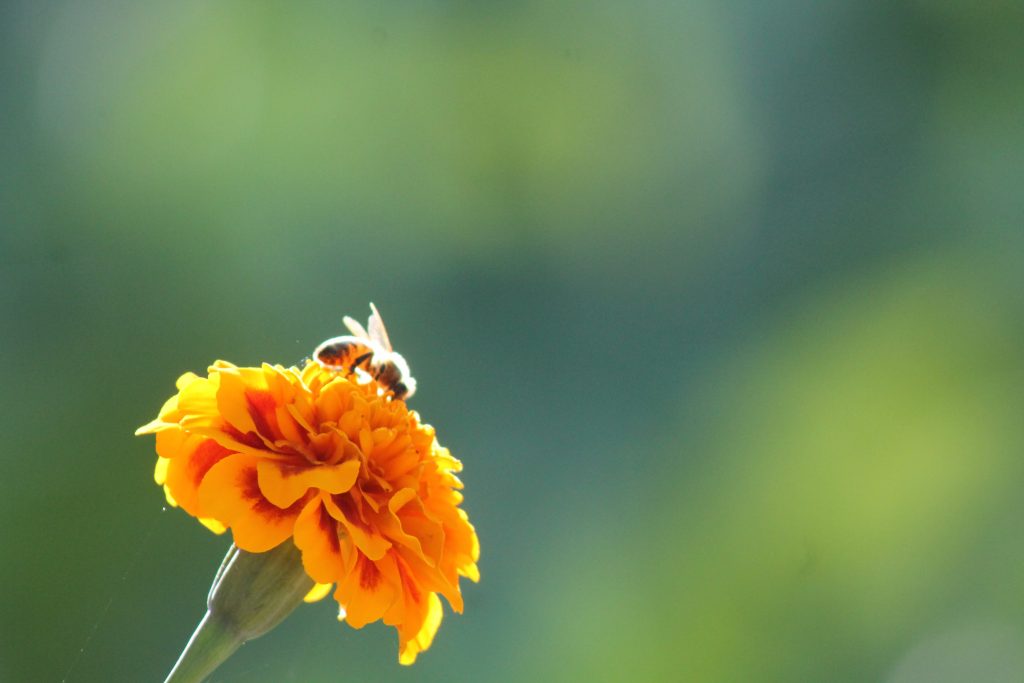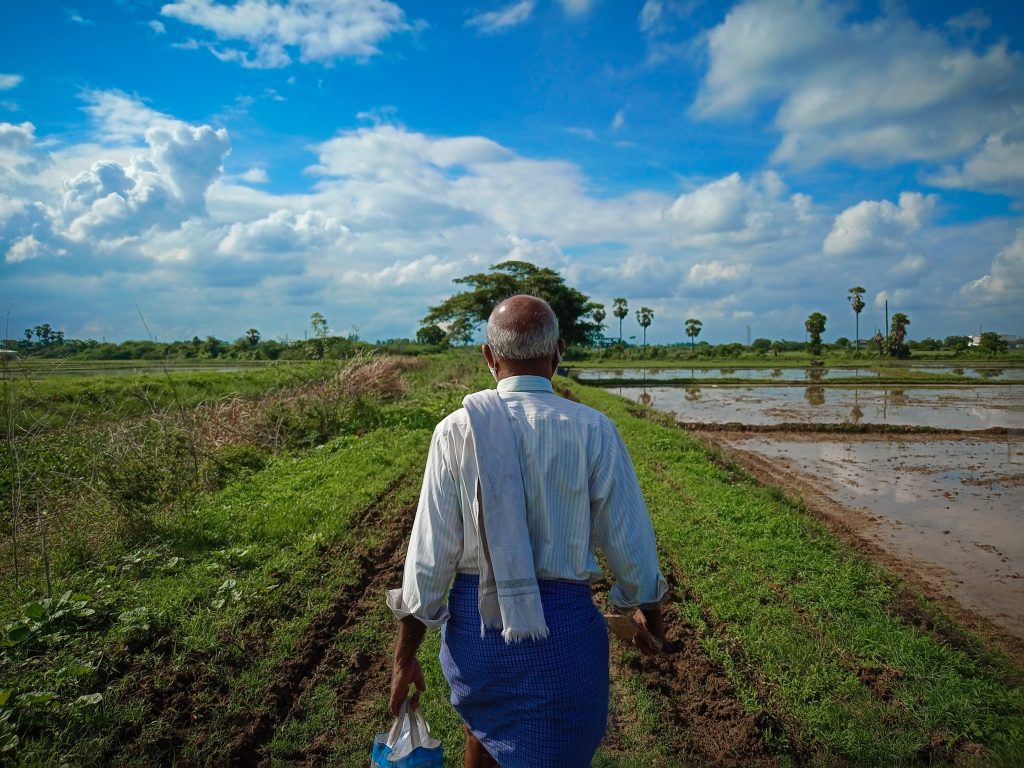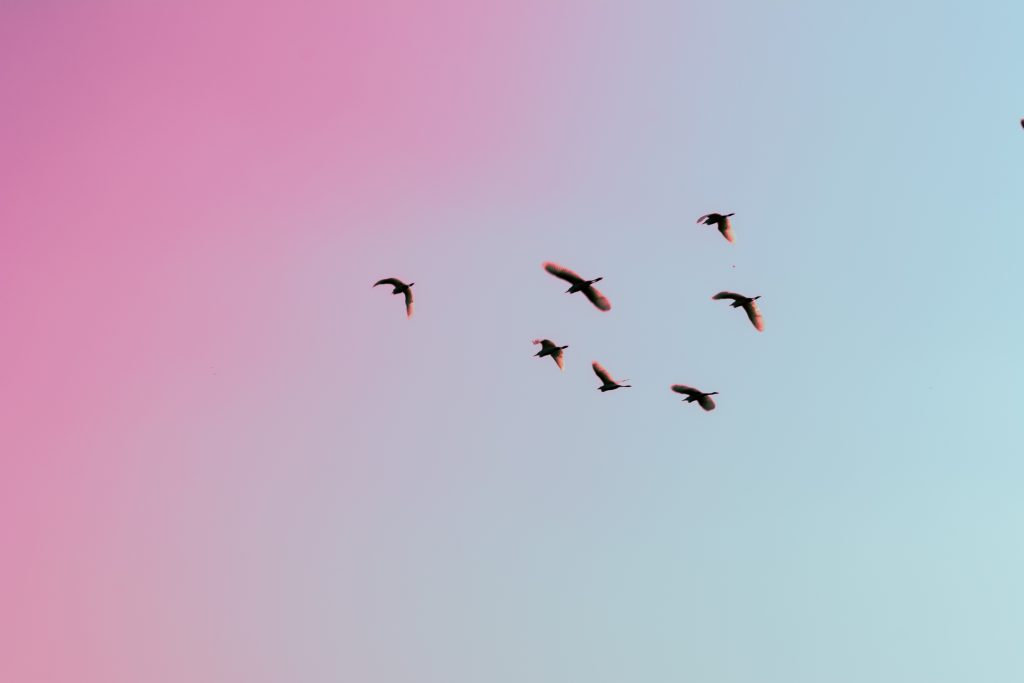Flowers have been grown in Estonia for hundreds of years or even millennia, but on farmland, it has been done more for biomass and nitrogen fixation than for flowers. For decades, however, smaller fields have been established to support honeybee harvesting. Now, for some years there has been a national push to establish larger harvesting fields.
On July 21, an information-practice day was held on the cultivation of bee-harvesting plants in the fields, where the bee scientists of the Estonian University of Life Sciences, Kaarel Pent, and Sigmar Naudi and the ecologist Jaan Liira of the University of Tartu spoke about the wishes of the bees to the farmers, and the farmer Madis Ajaots spoke about the benefits that the cultivation of different intercrops could bring to the field.
The day was not limited to talks. First, we compared the honey of different plants, their colour, smell and taste (thanks to many beekeepers for the samples!). Then we headed to the field in the village of Lembevere, where all three parties had established their selection of harvested plants and their mixtures and used different methodologies for this. The wood-and-red samples made it possible to both watch and listen to the results because bees from nearby beehives and various natural buzzers also contributed to the success of the day. There were places where the buzz tended to outweigh the human conversation, but all parties were friendly to each other and there was no stinging.
In the field, it was possible to see both normal bee forage-flower cultivation and an activity not defined in normal practice – e.g. cutting back flowers (i.e. “mowing” plants from a very high height). In the mixed fields, everyone could look for how many of the sown species are actually growing in the field and whether they are already blooming or at least giving hope to the bees later – and it was not always very successful.
Peeter Läniste from the Centre of Organic Farming introduced both the plants for harvesting and their seeds and also talked about his experiences with very unusually early sowing and sometimes unexpected plants suitable for harvesting. For example, his favourite is oil hemp, which is an oil and fibre crop, gaining more and more active cultivation and popularity, but under certain conditions, bees are also interested in hemp’s pollen. Both in the presentations and in the field, the life quality of plants was discussed, because this is the main value of flower fields for the farmer.
As the farmer Madis Ajaots emphasized, the idea of using flower intercrops different from everyday land use should be to improve soil health and biota and limit the risk of diseases/pests and weeds. In Jaan Liira’s sample area, it was interesting to compare the different interests of bees in monocultures and mixtures.
At the conclusion of the day, it became clearer to many participants that bees have many different expectations from the farmer. They are not limited to the expectation of nectar availability, bees also the need for pollen, and all this selectively throughout spring-summer-autumn from frost to frost. Bees can fly to the collection base from several kilometres away, and on the contrary, they can also ignore the flower fields right next to the hives, because there is an even better offer somewhere or the plants are not feeling well, for example, due to the weather conditions. Managing the well-being and flowering of flowers is quite difficult, and the experience of flower gardening is not known to the farmer or the previous horticultural wisdom is not easy to apply in the conditions of a large-scale field (economy). In the sample areas, everyone could and still can evaluate the performance of various flower solutions.
The plants will continue to grow and bloom for weeks, and it is recommended that you visit the demonstration area on warm, sunny days when the bees are ready to give their opinion.
More photos and video materials are available here.
By Jaan Lira
University of Tartu
EFFECT partner
